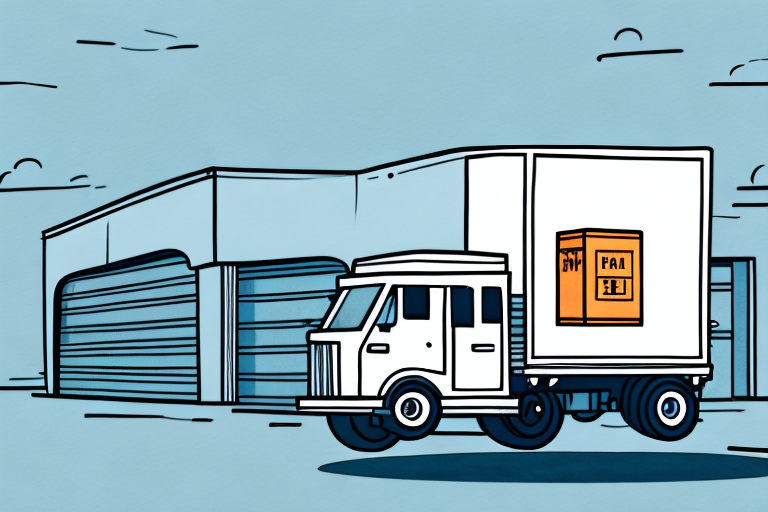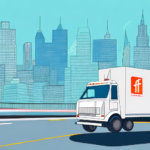Optimizing Last Mile Logistics for Maximum Efficiency
In today's fast-paced logistics landscape, optimizing the last mile delivery process is crucial for enhancing supply chain efficiency and ensuring customer satisfaction. This pivotal stage of delivery presents numerous challenges, including traffic congestion, high costs, and evolving customer expectations. This article delves into the intricacies of last mile logistics, its significance, the challenges it faces, innovative solutions to boost efficiency, the role of technology, best practices, the benefits of outsourcing, successful case studies, and future trends shaping the industry.
Understanding the Last Mile Logistics
Last mile logistics refers to the final segment of the delivery process, where products are transported from a distribution center to the end customer. This phase is critical as it directly influences customer satisfaction and loyalty. Remarkably, last mile delivery can account for up to 53% of the total delivery costs, making it a significant area for optimization in supply chain management.
One of the primary challenges in last mile logistics is the "last mile problem," which encompasses difficulties such as urban traffic congestion, limited parking spaces, and complex delivery routes. To address these issues, companies are exploring alternative delivery methods like drones, electric bikes, and autonomous robots, which offer more flexibility and efficiency in navigating crowded urban environments.
Key Challenges in Last Mile Logistics
- Traffic Congestion: Urban areas often experience heavy traffic, delaying deliveries.
- High Delivery Costs: The final stretch of delivery is typically the most expensive.
- Package Theft: Increased online shopping has led to a rise in package theft incidents.
- Environmental Concerns: Growing demand for sustainable and eco-friendly delivery options.
Importance of Last Mile Logistics in Supply Chain Management
For businesses in the e-commerce and retail sectors, efficient last mile logistics are essential for maintaining competitiveness and customer satisfaction. Timely and accurate deliveries foster customer loyalty and can significantly impact a company's reputation. Moreover, optimizing last mile logistics helps in reducing operational costs and enhancing overall profitability.
Technology plays a pivotal role in enhancing last mile delivery efficiency. Tools like route optimization software, GPS tracking, and automated delivery notifications enable businesses to streamline their operations, reduce delivery times, and improve accuracy. Additionally, data collected from these technologies can provide valuable insights for further optimization of supply chain strategies.
Benefits of Efficient Last Mile Logistics
- Enhanced customer satisfaction and loyalty
- Reduced operational and delivery costs
- Improved delivery accuracy and timeliness
- Greater flexibility in handling deliveries
Innovative Solutions to Improve Efficiency
To overcome the challenges of last mile logistics, businesses are adopting various innovative solutions:
Crowdshipping
Crowdshipping leverages crowdsourced delivery personnel to perform deliveries, increasing flexibility and reducing costs. This model allows companies to scale their delivery operations without significant investments in infrastructure.
Micro-Warehousing
By establishing small warehouses in strategic locations, businesses can reduce delivery times and increase efficiency. Micro-warehousing brings products closer to customers, enabling faster and more reliable deliveries.
Autonomous Vehicles and Drones
The use of self-driving vehicles and drones is revolutionizing last mile delivery by reducing the need for human drivers and enabling deliveries in hard-to-reach areas. Companies like Amazon and UPS are actively investing in these technologies to enhance their delivery capabilities.
Role of Technology in Streamlining Last Mile Delivery
Technology is at the forefront of transforming last mile logistics. Key technological advancements include:
Route Optimization Software
Advanced route optimization tools analyze various factors such as traffic conditions, delivery windows, and vehicle capacity to determine the most efficient delivery routes, thereby reducing fuel consumption and delivery times.
GPS Tracking and Real-Time Updates
GPS-enabled devices allow both businesses and customers to track deliveries in real-time, providing transparency and improving the overall delivery experience.
Blockchain for Transparency
Blockchain technology enhances transparency, traceability, and security in the delivery process. It ensures that all transactions and movements are securely recorded, reducing fraud and errors.
Robotics and Automation
Robotic solutions and automated delivery vehicles can navigate through crowded areas, handle packages, and interact with customers, significantly improving delivery efficiency and reducing labor costs.
Artificial Intelligence and Machine Learning in Last Mile Logistics
Artificial Intelligence (AI) and Machine Learning (ML) are pivotal in optimizing last mile logistics. These technologies enable businesses to:
Predict Demand and Optimize Routes
AI algorithms analyze historical data to predict demand patterns and optimize delivery routes, ensuring efficient resource allocation and minimizing delays.
Enhance Customer Experience
AI-powered chatbots provide real-time updates and handle customer inquiries, improving communication and satisfaction.
Predictive Maintenance
ML models can predict when delivery vehicles require maintenance, preventing unexpected breakdowns and ensuring timely deliveries.
Inventory Management
AI optimizes inventory levels by analyzing customer demand and inventory turnover rates, reducing waste and improving order fulfillment efficiency.
Impact of Big Data Analytics on Delivery Optimization
Big Data Analytics plays a crucial role in optimizing last mile delivery by providing actionable insights derived from vast amounts of data collected during the delivery process.
Personalized Delivery Experiences
Analyzing customer data allows businesses to tailor delivery options based on individual preferences, such as preferred delivery times and locations, enhancing customer satisfaction.
Cost Optimization
Big data helps identify areas where costs can be reduced, such as optimizing delivery routes to save fuel and reduce labor expenses.
Improved Sustainability
Data-driven insights enable businesses to implement eco-friendly practices, such as using electric vehicles and optimizing routes to minimize carbon emissions.
Best Practices for Effective Last Mile Delivery
Implementing best practices is essential for achieving efficient last mile delivery operations:
Utilize Efficient Vehicles
Investing in fuel-efficient and eco-friendly vehicles can reduce operational costs and environmental impact.
Implement Real-Time Tracking
Real-time tracking systems enhance transparency and allow for proactive issue resolution, improving overall delivery reliability.
Optimize Delivery Routes
Regularly reviewing and optimizing delivery routes ensures maximum efficiency and minimizes delays.
Partner with Third-Party Logistics Providers
Outsourcing delivery operations to specialized logistics providers can enhance scalability and reduce costs.
Maintain Open Communication with Customers
Keeping customers informed about their delivery status builds trust and improves the overall delivery experience.
Advantages of Outsourcing Last Mile Logistics Services
Outsourcing last mile logistics to third-party providers offers several benefits:
- Cost Reduction: Eliminates the need for significant capital investment in delivery infrastructure.
- Scalability: Allows businesses to scale their delivery operations based on demand without overextending resources.
- Expertise: Third-party providers bring specialized knowledge and experience, enhancing delivery efficiency.
- Focus on Core Competencies: Outsourcing allows businesses to concentrate on their primary operations while leveraging external expertise for logistics.
Case Studies: Successful Last Mile Logistics Optimization
Amazon's Use of AI and Robotics
Amazon has integrated AI and robotics into its last mile delivery operations, utilizing automated warehouses and AI-driven route optimization to enhance efficiency and reduce delivery times.
Walmart's Crowdsourcing Strategy
Walmart has successfully implemented crowdshipping by leveraging crowdsourced delivery personnel, improving delivery speed and flexibility during peak seasons.
UPS's Autonomous Vehicles
UPS is exploring the use of autonomous delivery vehicles and drones to navigate urban environments, aiming to reduce labor costs and enhance delivery reliability.
Future Trends in Last Mile Logistics
The last mile delivery landscape is continuously evolving, with several emerging trends poised to shape its future:
Autonomous Delivery Vehicles
Self-driving delivery vehicles are expected to become more prevalent, offering cost-effective and efficient delivery solutions.
Drone Deliveries
Drones provide a rapid and flexible delivery option, especially in remote or congested areas, enhancing delivery speed and reducing costs.
Blockchain Integration
Blockchain technology will further enhance transparency and security in the delivery process, ensuring traceability and reducing fraud.
Real-Time Dynamic Routing
Advanced routing algorithms will enable real-time adjustments to delivery routes based on current traffic conditions and other dynamic factors, optimizing delivery efficiency.
Sustainable Delivery Practices
Increasing emphasis on sustainability will drive the adoption of eco-friendly delivery methods, such as electric vehicles and bicycle couriers, reducing the environmental impact of last mile deliveries.
Conclusion: Key Takeaways for Optimizing Last Mile Logistics
Optimizing the last mile delivery process is essential for businesses aiming to enhance supply chain efficiency and elevate customer satisfaction. By addressing the inherent challenges through innovative solutions, leveraging technology, adopting best practices, and considering outsourcing options, companies can significantly improve their last mile logistics operations. The future of last mile delivery promises continued advancements with autonomous vehicles, drones, blockchain, and sustainable practices poised to revolutionize the industry. Embracing these trends and continuously optimizing delivery strategies will be crucial for businesses to achieve long-term success and maintain a competitive edge in the evolving logistics landscape.




















